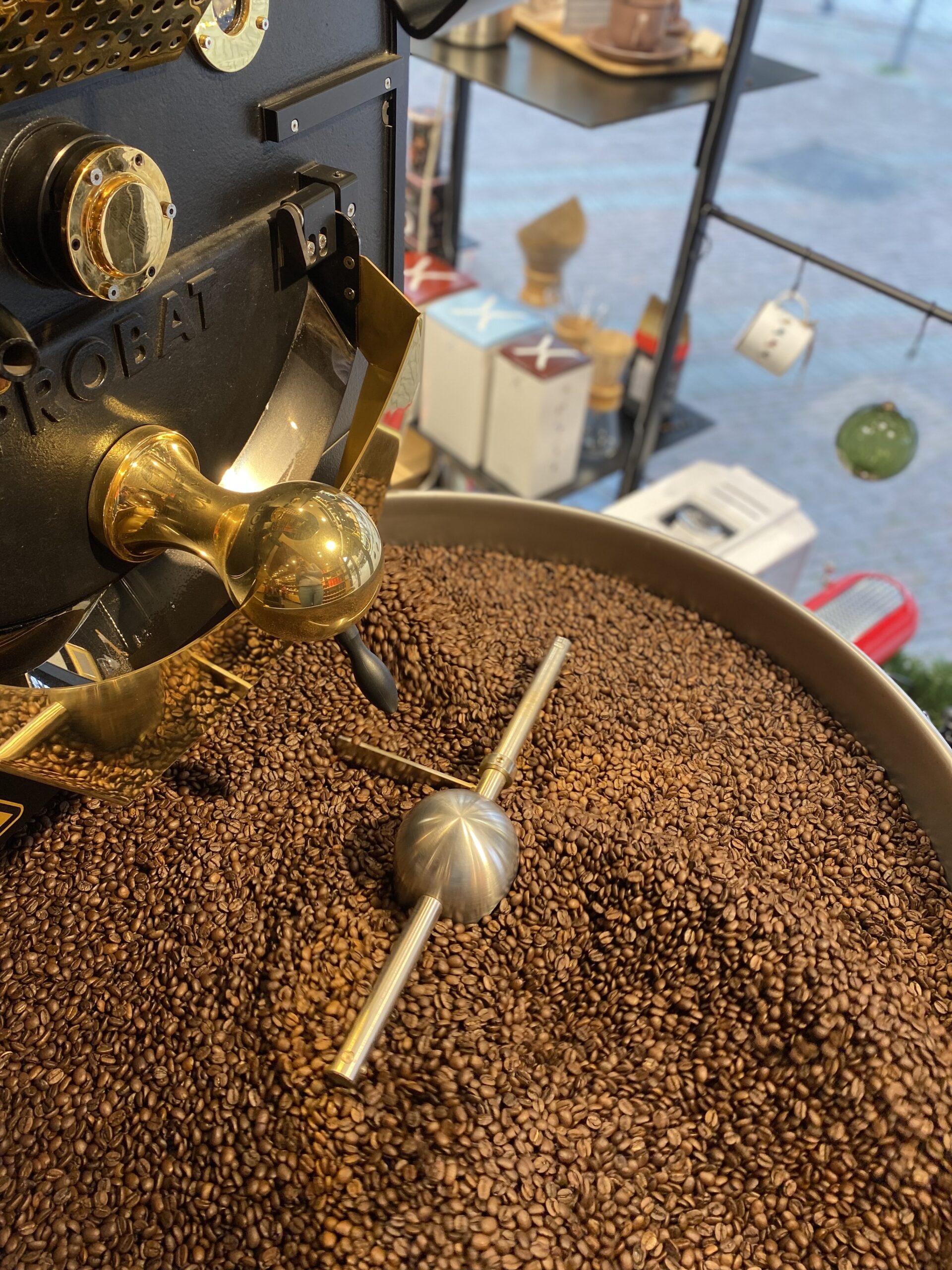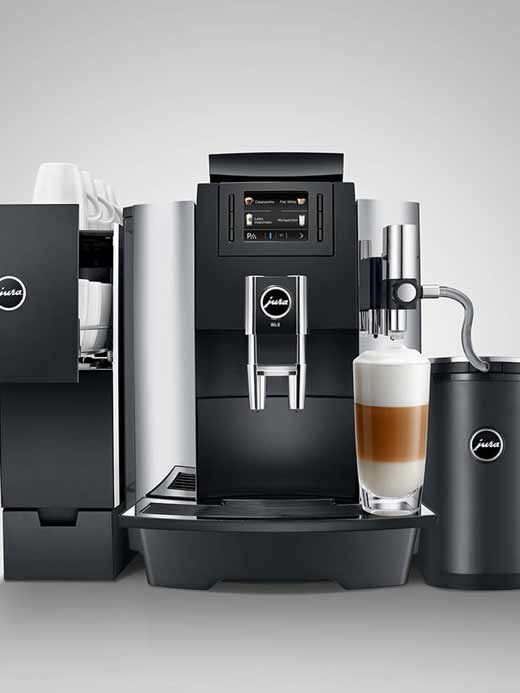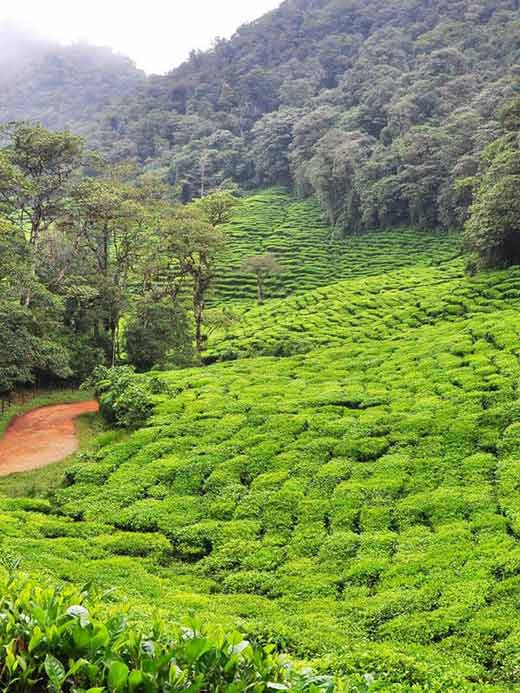Different grind sizes
Coarse grinding
It is often compared to coarse salt. This grind size is ideal for brewing methods such as the French press or coffee percolator. When coffee is coarsely ground, the water passes more quickly through the beans, resulting in a smoother, more uniform extraction of flavours. However, grinding too coarsely can result in a weak, watery, or flat-tasting coffee, as the water doesn't stay in contact with the coffee long enough to fully extract the flavors. To get the best taste, it's crucial to adjust the grind size according to the brewing method used.
Medium grind
For coffee lovers looking for the perfect balance between intensity and flavor, the medium grind is often the best option. This grind size, comparable to sand, is frequently used for filter coffee makers, V60s and even some Italian coffee machines. A medium grind provides a balanced extraction, where the water can pass evenly through the beans, ensuring that the essential aroma compounds are well extracted. However, it's important to note that coffee quality can vary according to the freshness of the beans and the precision of the grind size. Adapting the grind to your equipment and personal preferences is essential to achieving the perfect cup of coffee.
Fine grinding
Fine grinding, often compared to powdered sugar, is mainly used for espresso machines and Turkish coffee makers. This technique enables rapid, intense extraction of aromatic compounds, producing a cup of coffee rich in flavor and aroma. Grinding too finely can lead to over-extraction, resulting in a bitter, over-strong coffee. To avoid this, it's crucial to adjust the grind size according to the machine used and taste preferences. Understanding how grind size affects taste helps to perfect extraction and achieve the optimum coffee experience.
The science behind grinding and extraction
Grind size and extraction
Grind size is a critical factor in determining the surface area exposed to water, which directly influences the extraction rate. A finer grind increases surface area, allowing more coffee particles to come into contact with the water, leading to a slower extraction process. This can result in a stronger, more robust flavor, as more soluble compounds are rapidly extracted. Conversely, a coarser grind has less surface area, which speeds up extraction and often produces a milder taste. Every brewing method, whether espresso machine or French press, has an optimum grind size that maximizes flavor while minimizing undesirable compounds such as bitterness or astringency.
Contact time
The contact time between coffee grounds and water is another important aspect affected by grind size. For example, in espresso machines, which use high pressure to force water through the grounds quickly, a fine grind is needed to guarantee sufficient extraction over a short period. On the other hand, methods such as the French press or cold brew require a coarser grind. If the grind size does not correspond to the contact time required by the method, the coffee may turn out to be either under-extracted, leading to a sour taste, or over-extracted, resulting in bitterness.
Solubility
The solubility of coffee components varies considerably with grind size, which has an impact on the final taste profile of the brew. Finer grinds improve the solubility of coffee's flavorful oils and acids, which can intensify the complexity of the coffee's taste. However, this increased solubility also means that undesirable compounds, such as chlorogenic acids, can be over-extracted, leading to bitterness if not carefully managed. Coarser grinds allow for a more controlled solubility process, often resulting in a smoother, more balanced cup of coffee. Understanding these nuances enables coffee lovers to adapt their grind size to achieve the desired flavor profile, whether it's a rich espresso or a delicate coffee.
Grind size adapted to your machine
The French press
When using a French press, the size of the coffee grind plays a crucial role in determining the final taste of your brew. A coarser grind is generally recommended for this method, as it allows the coffee to infuse well without over-extraction. In fact, a longer infusion time, usually around four minutes, is required to extract the optimum aromas from the coffee grounds. A coarse grind ensures that coffee particles do not pass through the wire mesh filter, avoiding a grainy or muddy texture. The result is a rich, full-bodied cup of coffee with pronounced flavours.
The filter coffee maker
For filter coffee makers, a medium grind is generally recommended for best flavor extraction. This grind size enables a balanced extraction process, ensuring that water passes through the coffee grounds at an appropriate rate. A more regular grind in a filter coffeemaker allows better control of flavor extraction, which is crucial for a consistent, enjoyable cup of coffee. Regular grinding ensures that the water can evenly saturate the coffee grounds, avoiding over- or under-extraction. The result is a round, flavorful cup of coffee that brings out the natural characteristics of the beans.
The espresso machine
When making espresso, the size of the grind is even more critical to the final taste of your coffee. Espresso machines require a fine grind to achieve the high-pressure extraction that characterizes this brewing method. However, too fine a grind can clog the filter and make the beverage cloudy, while a coarser grind will produce a weak, under-extracted espresso. A fine grind increases the surface area of the coffee, enabling flavours and aromas to be extracted quickly and efficiently. This leads to a concentrated espresso with a rich crema, balanced intensity and full-bodied flavor. Mastering the grind of your espresso machine is essential to extract the quintessential qualities of your coffee beans.
Experiment
Over- and under-extraction
Recognizing over- and under-extraction is a key skill for any coffee lover looking to perfect their beverage. Over-extraction occurs when the grind is too fine, resulting in excessive extraction of coffee compounds, making the taste bitter and overpowering. On the other hand, under-extraction occurs with a grind that is too coarse, where the water passes too quickly through the coffee without extracting sufficient elements, resulting in a weak and often acidic taste. It is crucial to adjust the grind size according to the preparation method used. For example, if your coffee has an astringent, aggressive taste, this may indicate over-extraction, and it would be preferable to slightly coarsen the grind. Understanding these nuances enables you to fine-tune your coffee preparation for optimum results.
Conclusion
Understanding the impact of grind size on coffee taste is essential for any coffee lover looking to enhance their tasting experience. By delving into the subtleties of coarse, medium and fine grinds, we discover the science behind extraction rates, water contact time and the solubility of coffee components. Each grind size presents unique flavor profiles and brewing methods, with coarse grinds offering bold tastes but risking under-extraction, medium grinds offering balanced flavors and fine grinds intensifying flavors but potentially leading to over-extraction. Adapting grind size to the brewing method, experimenting with different sizes and perfecting grinding techniques are all crucial steps to mastering the art of coffee brewing and enjoying a perfect cup of coffee every time.


